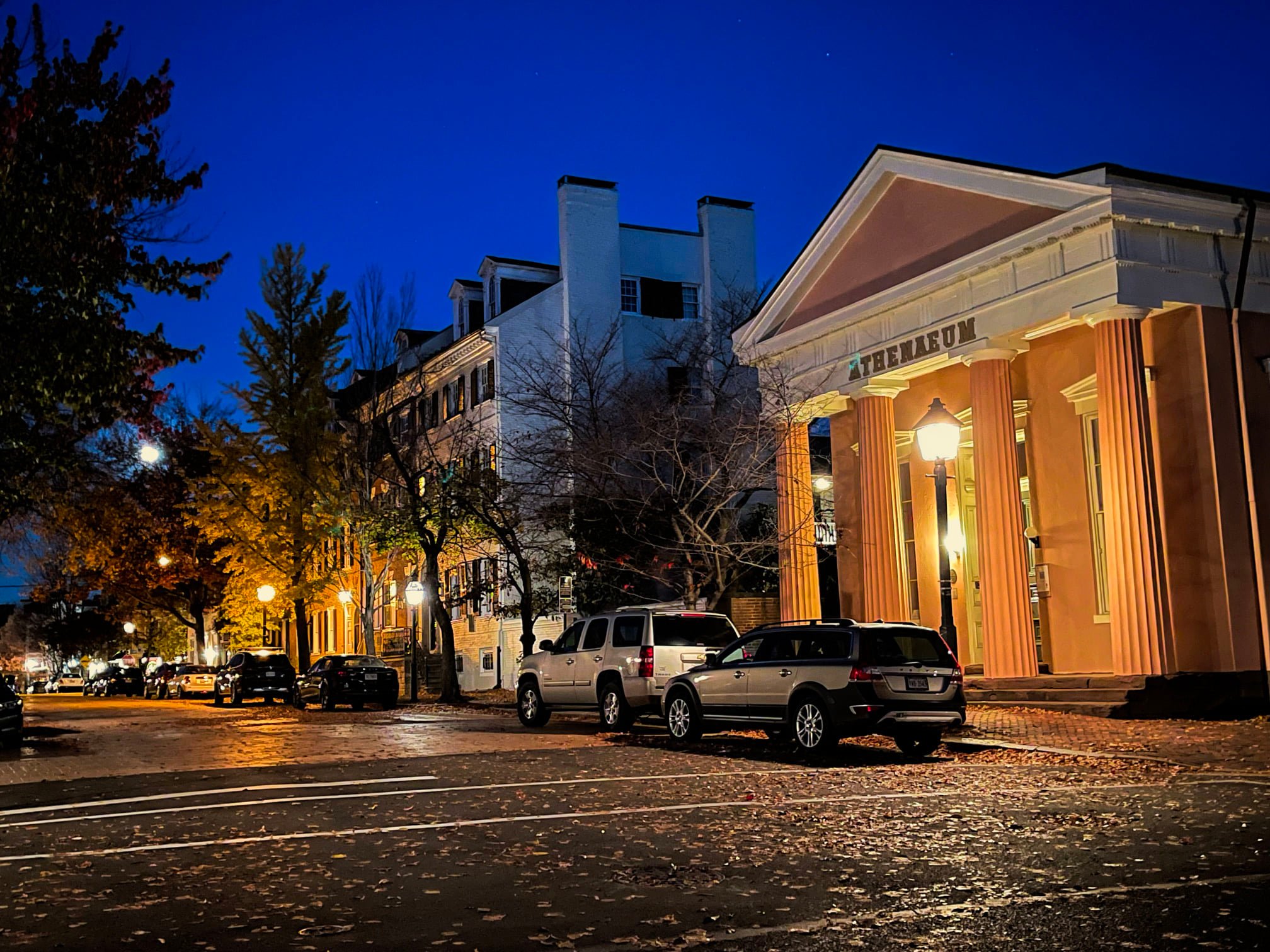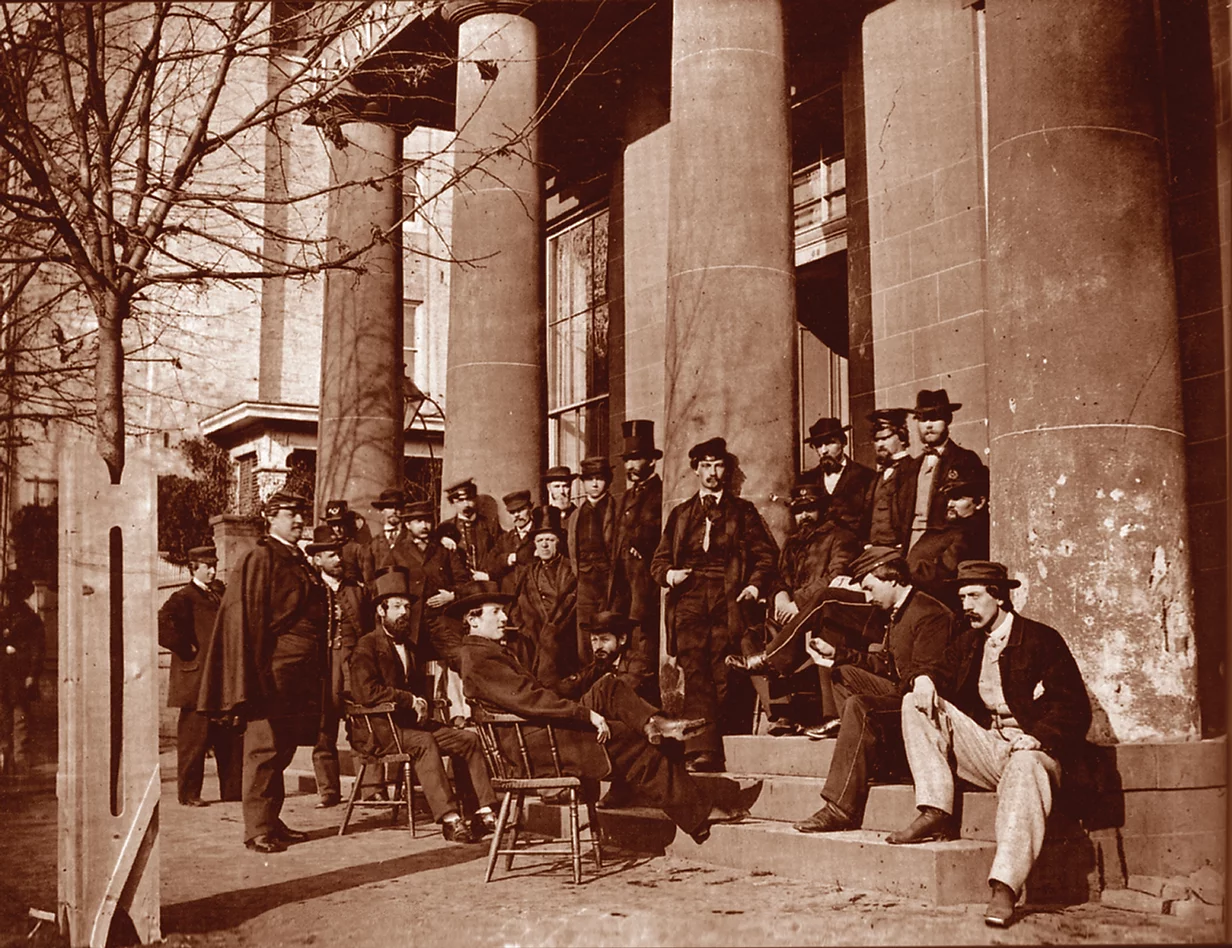What’s Inside the Alexandria Athenaeum in Old Town?

ALEXANDRIA, VA – I am always challenged when I try to spell or pronounce The Athenaeum (aTH-uh-NAY-um) and for years the beautiful building perched so majestically atop the corner of Prince and Lee Streets in Old Town was a mystery to me. But then I went to a party there a couple decades ago, and many since then, and realized what an accessible place it is and what an incredible asset it is to Alexandria.
You need to know a little of its history to appreciate what a gem it is. For starters, it looks the way it does because back in the early to middle 1800s, Greek Revival architecture was pretty trendy. So when the Bank of Old Dominion wanted to build a new building in 1852, the architect went all the way with the columns and the stepped, grand portico. Mimicking a Greek temple, the bank strived to look like a pretty darned safe space to keep your coin.
Positioned at 201 Prince Street, right at the head of Captain’s Row (the cobblestone stretch of the 100 block of Prince Street), where the wealthy sea captains lived, this building and the Lyceum at 201 S. Washington Street (home to the Alexandria History Museum) are the two surviving examples of Greek revival neo-classic architecture in Old Town.
If the walls could talk, they would tell you that Robert E. Lee banked there in his youth and that it was Union-occupied during the Civil War. In fact, the famous Civil War photographer Matthew Brady took a now-historic shot there of a group of men hanging out on the front steps. Citizens National Bank moved into the spot in 1870 and thirty seven years later the Stabler-Leadbeater Apothecary Shop bought it in 1907 for use as a factory. In 1925 it became the area’s first Free Methodist Church.

It was not even called The Athenaeum until 1964, when the Northern Virginia Fine Arts Association (NVFAA) purchased it and named it after Athena, the Greek goddess of wisdom. Today the building is a celebration of the regional arts of Maryland, DC, and Virginia..
It is the only historic building in Old Town that is open to the public, free of charge, not owned by a government.
The elegant rooms have 24-foot high coved ceilings, enormous windows and beautiful woodwork. The exterior features four soaring Doric columns across the portico and walls of stucco over stone and brick.
The Athenaeum Gallery mounts a wide range of exhibitions from edgy to classic, representing a wide range of media and style. Concerts, dance performances, and literary events including poetry slams are staged in the stately main room.
Classes such as yoga and ballet occur on the gleaming pine floors. “We strive to make every visit interesting. Our galleries and charming rear courtyard are an ideal location for weddings, receptions, business meetings or other special events,” says NVFAA.
To join, see about renting, or follow current shows and upcoming events, please check the Athenaeum website here. The Athenaeum is available for viewing during gallery hours or by appointment. Gallery hours are Thursday-Sunday from 12:00pm-4:00pm. The Athenaeum is closed on holidays.
For More: Alexandria’s Athenaeum in the News




